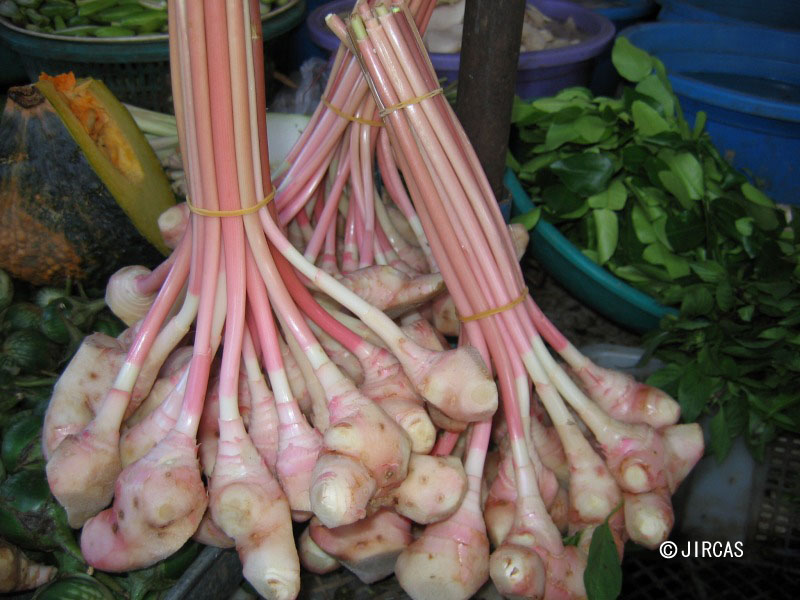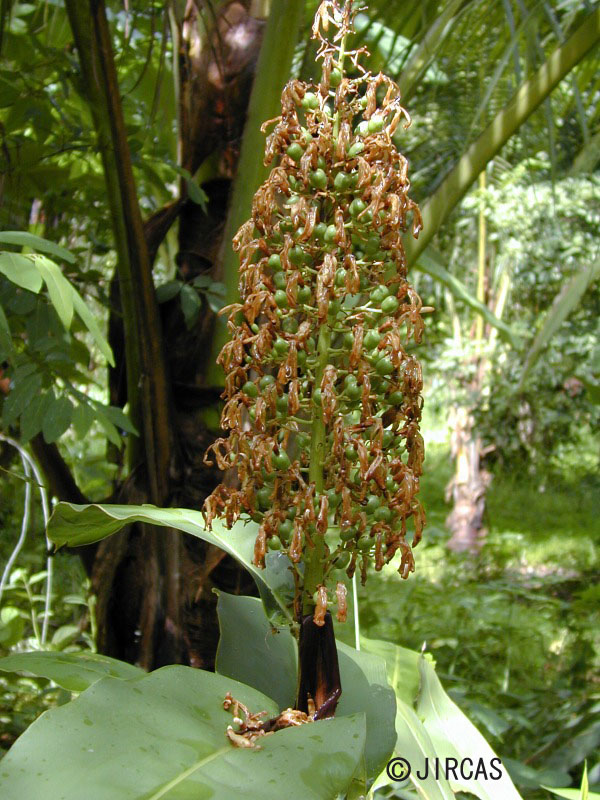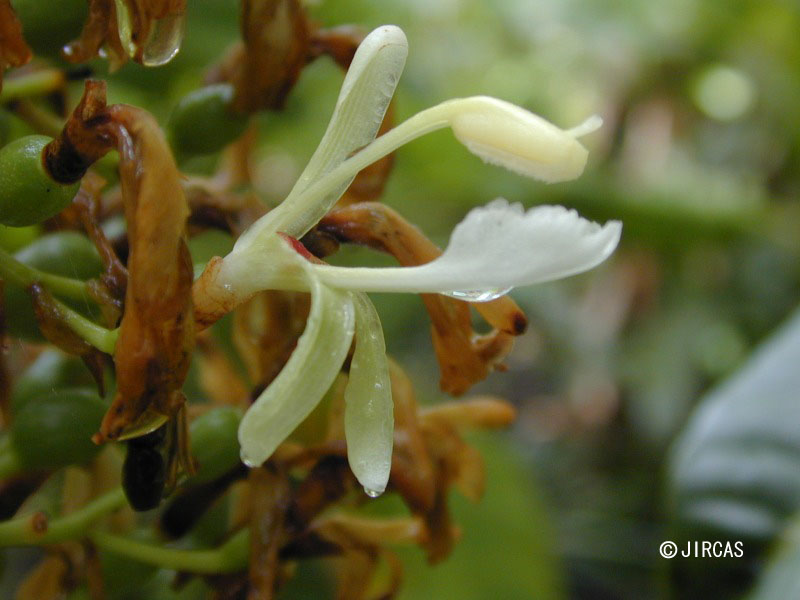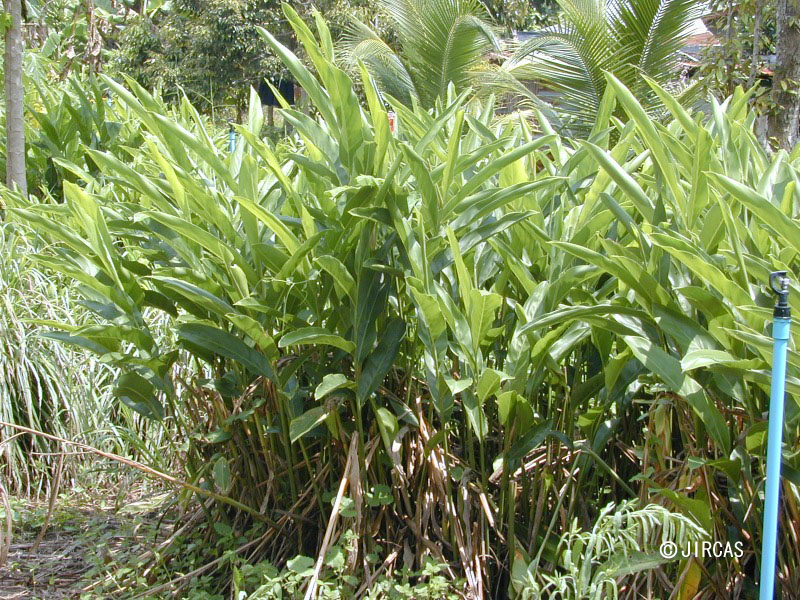Alpinia galanga (L.) Willd. (Zingiberaceae)
- Scientific name
- Alpinia galanga (L.) Willd.
- Family name
- Zingiberaceae
- Common name
- Galanga (English); Nankyou (Japanese)
- Local name
- Khaa, kha taa daeng
Herbaceous perennial with stout, creeping rhizomes, pseudostem up to 3 m tall. Leaves alternate, somewhat distichous, oblong-lanceolate; base cuneate, apex acuminate, margin slightly undulate, surfaces glabrous, glossy green above; 20–50 × 15–25 cm. Petiole 1–5 mm long. Inflorescence paniculate, terminal on leafy shoots; bracts and bracteoles caducous; flowers white, slightly fragrant. Calyx cupular or tubular, trifid. Corolla tubular, 3-lobed, 2-fold longer than calyx tube, upper lobes linear-oblong. Labellum boat-shaped, with apex truncate, emarginated; margin undulate. Stamen 1; filament fleshy, recurved; anther basifix. Staminode minute, tooth-like, c. 3 mm long, triangular, acute. Ovary 3-carpeled, 3-lobed, 3-loculed, oblong-cylindrical. Fruit a dehiscing capsule containing many seeds.
Grown ubiquitously in backyard gardens for its aromatic rhizomes, which are used as herbs or spices. Propagated by dividing older rhizomes into pieces (5–10 cm long), each with at least two undamaged terminal buds. The seeded rhizome is planted in a hole or furrow at spacing of 75 × 100 cm, and covered with topsoil and mulch. Grows under a wide range of soil conditions, but thrives in loamy soil at elevations below 1,000 m a.s.l.
Young rhizomes, young shoots, and young inflorescences are consumed as fresh or cooked vegetables. Rhizomes are used as an ingredient in kaeng oom moo, a curry soup commonly consumed in northern Thailand.
Young rhizomes, young shoots, and young inflorescences are consumed as fresh or cooked vegetables. Rhizomes are used as an ingredient in kaeng oom moo, a curry soup commonly consumed in northern Thailand.







